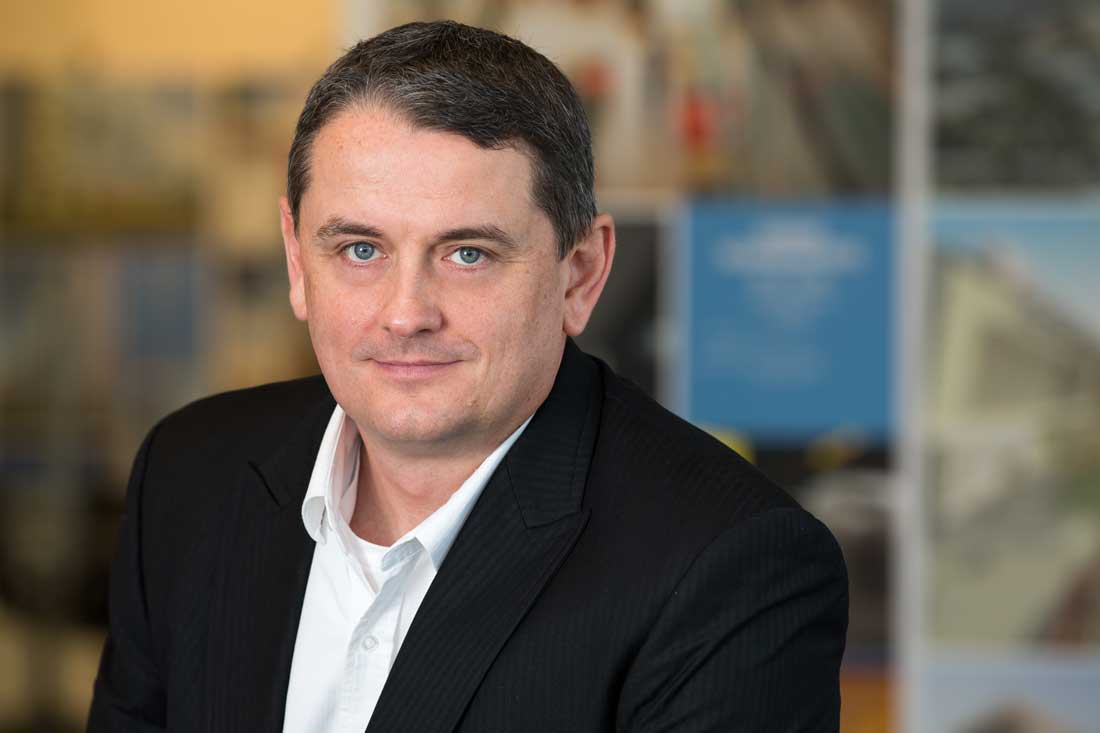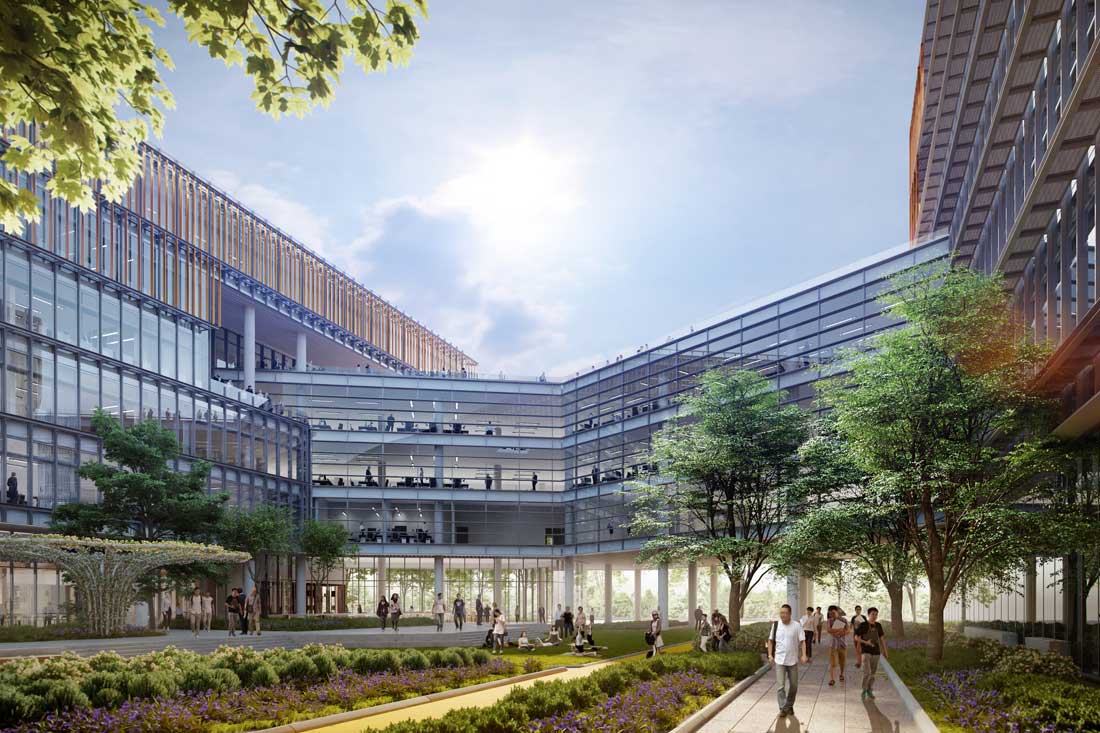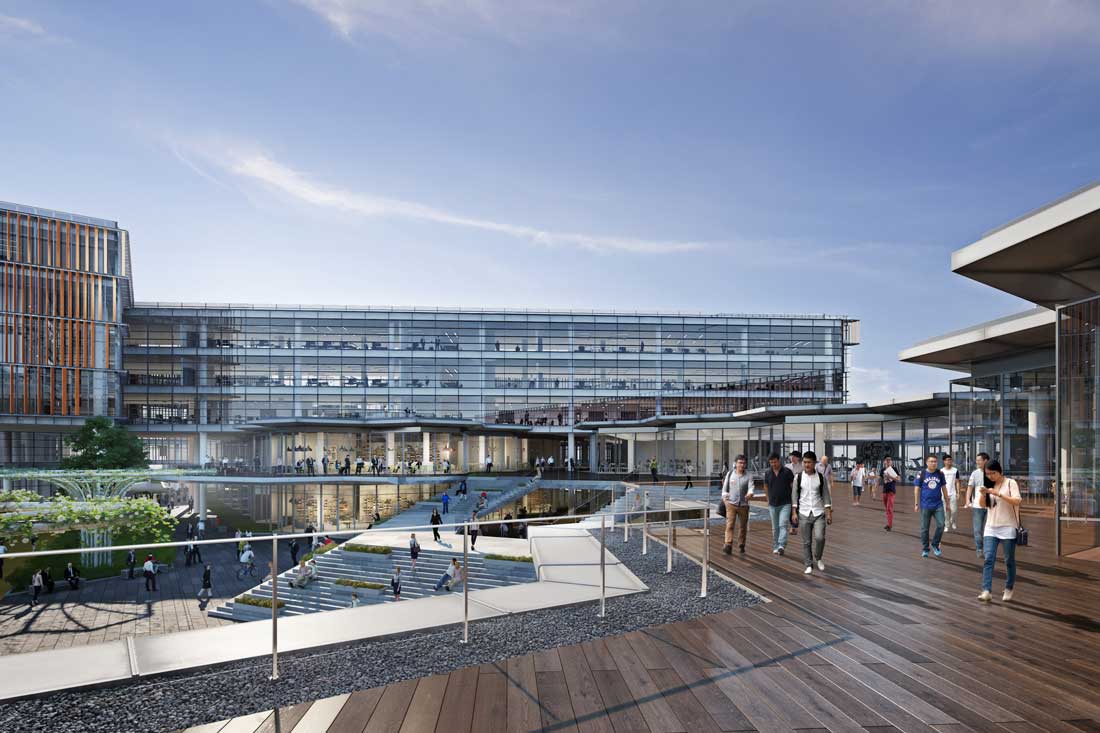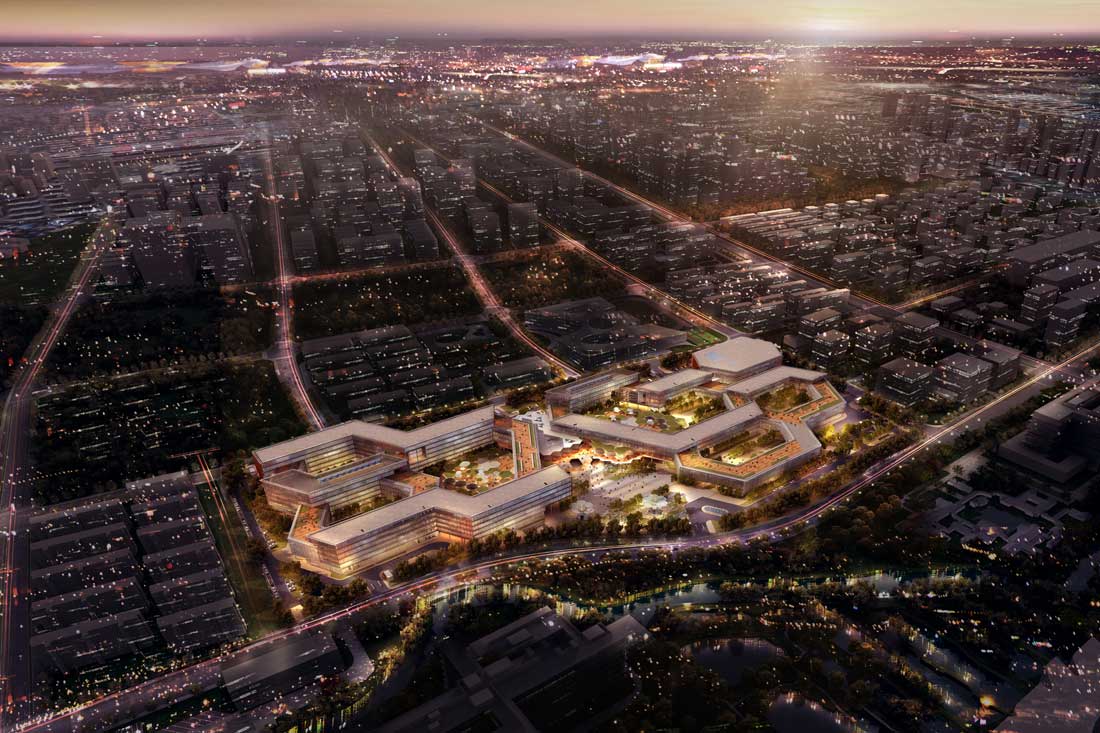Named by Fast Company as one of the world’s top 10 most innovative architecture companies, NBBJ and its team of designers and architects work with doctors, anthropologists and molecular biologists to create work environments that disrupt the status quo and effect real, meaningful change at all levels. Partner in charge, Eric Phillips tells us more about what they do.

NBBJ works with many of the world’s leading tech companies. What are the common threads running through these organisations that you’ve worked with (i.e. their needs, wants, issues they face)?
Beyond the overarching need for all tech companies to be innovative in order to stay relevant, the common challenge that runs across tech companies, from Shenzhen to Silicon Valley centres, is access and retention of great talent. Unfortunately, physical space and workplace facilities typically have not been considered as an integral part of enterprise strategies to excel in these areas. Yet, we absolutely know that physical space drives behavior, and we intuitively see and feel this every day but we also know this to be true through hard data and scientific research. To that end, it’s important for companies to consider their workplace investments as a business tool that can help. Many of our most forward-thinking clients have embraced this notion, and I believe more will in the years to come.

Eric Philips, partner, NBBJ
NBBJ has designed corporate projects for a diverse set of client types. This diversity has shown us that across business sectors many of the wants, needs, and issues are very similar. However, what currently sets the technology sector apart is the rapid growth and expansion requirements they face. In the past three years, NBBJ has designed projects for Alibaba, Amazon, Samsung, and Tencent. Consistently, we have found that NBBJ’s use of technology and our focus on applied research puts us in a similar position to our clients, which sets us apart.

Alibaba headquarters, China
Tell us more about the neuroscience research that you do.
First, I think it is important to give context to this research. This effort comes from the NBBJ Applied Research Fellowship program, an applied research endeavor that connects to the highest calling of our firm: to explore new ideas, innovations, and applications that elevate the human experience. While NBBJ does not do primary research, the engaging people who do it and the understanding of how it can be applied is the goal of working with fellows. One very important Fellow who has been with us for three years is Dr. John J. Medina, a developmental molecular biologist focused on human brain development and the genetics of psychiatric disorders. John’s expertise and lifelong fascination with how the mind reacts to and organises information has profoundly impacted the fellowship outcomes. This has in turn forever changed how our teams approach the design of a physical space. For example, in working with Dr. Medina, we’ve identified some of the most important factors for human innovation, attention, and productivity and applied them to our corporate projects. These include strategies to reduce noise to improve concentration, increase access to nature to improve mood, and encourage physical movement to promote creativity.

Alibaba headquarters, China
In the case of Alibaba, how have features that boost cognitive performance and wellbeing been considered?
The entire design scheme is centred on health, wellbeing, and cognitive performance enhancement through the integration of architecture, landscape, and interior planning. What we know from the Phase 1 campus (we are now Phase 4) is that there was a deep appreciation for bringing the natural environment into the campus as an amenity for the Alibaba staff. What we were able to accomplish too was taking this idea and expanding it to enhance the performance of the buildings and the people who will work on the campus. An example is our implementation of neuroscience research and biophilia principals. We know from numerous studies that physical and visual access to nature enhances brain activity. In turn, we allowed this basic idea to be a driver for formal strategies and office space planning. Our expected outcome is a campus that enhances innovative outcomes because we know our solution gives way to enhanced opportunities for heightened cognitive performance.

Alibaba headquarters, China
What is the starting point in your design process?
For me, the design process begins during the first meeting with a client when they open up to reveal their goals, aspirations, obstacles, and fears. For many C-suite business leaders, this is a very personal and passionate topic. Through this conversation, I begin to see how our skills and talents can assist them in their journey to transform their organization. I cannot overstate the importance of this moment to inspire the overall design process.
When we look at the overall design process, there are so many variables embedded in each client/project that makes it unique. Acknowledging this, I will focus on the things that we maintain in our design process regardless of client type, project size, or geography. Teams at NBBJ are composed of design professionals with diverse backgrounds and expertise. We are deeply committed to the notion that diverse ideas create stronger design outcomes. This is impossible if everyone sees the problem through a similar lens. We also commit to a design process where the best ideas win. In a profession where big egos and big personalities can capture the imagination of the general public, NBBJ is a different type of design practice where ideas prevail through a culture of collaboration. In contrast to many design practices where design leaders create sheet music for others to follow, our design leaders strive to be more analogous to great jazz musicians where ideas shift and transform in response to the larger team.

Alibaba headquarters, China
Beyond traditional services, the firm offers sensors and app development, VR-based planning tools, etc. How are these used to aid the design process?
Our investment in special consulting services and advanced technologies represents our dedication to the belief that diverse expertise and talents will continually enable NBBJ to be relevant in an ever-changing business environment. As we know, every company is a technology company to some extent. However, we are not attempting to diversify our technology services to compete with the likes of Samsung or Microsoft – both our clients. We are interested in how technology consistently enables our design teams to innovate. Examples would include research and development that focuses on software that enables our clients to make bigger, stronger, and faster decisions through the use of APP’s and/or VR tools. Focusing our development efforts on design innovation outcomes ensures that we not dilute our core expertise while also allowing us to be flexible in how we create client success.
A searchable and comprehensive guide for specifying leading products and their suppliers
Keep up to date with the latest and greatest from our industry BFF's!

Savage Design’s approach to understanding the relationship between design concepts and user experience, particularly with metalwork, transcends traditional boundaries, blending timeless craftsmanship with digital innovation to create enduring elegance in objects, furnishings, and door furniture.

Create a configuration to suit your needs with this curved collection.

In the pursuit of an uplifting synergy between the inner world and the surrounding environment, internationally acclaimed Interior Architect and Designer Lorena Gaxiola transform the vibration of the auspicious number ‘8’ into mesmerising artistry alongside the Feltex design team, brought to you by GH Commercial.

We sat down with Chris Fox to speculate on the future of regenerative architecture, circular economy and experimenting with vegetation in and on buildings.

In Singapore a new workplace offers the perfect place to conduct business in comfort away from a bustling city.
The internet never sleeps! Here's the stuff you might have missed

Dallas Rogers, Head of Urban Discipline at the School of Architecture, Design and Planning, University of Sydney, comments on the history of map-making in our cities.

Symbolising a commitment to cultural preservation and timeless design, Powerhouse Castle Hill invites visitors into the stories behind the artefacts in a diverse range of educational and cultural activities.